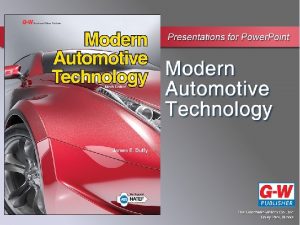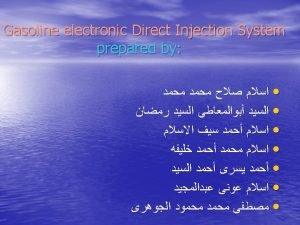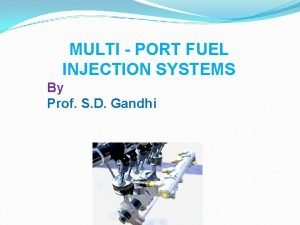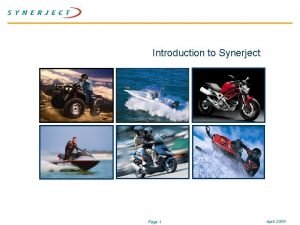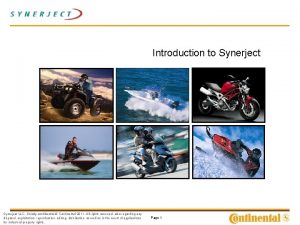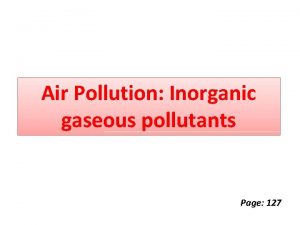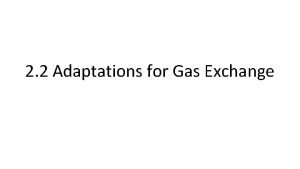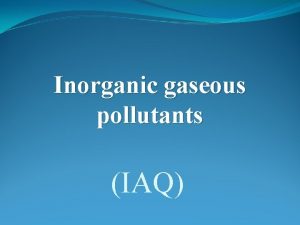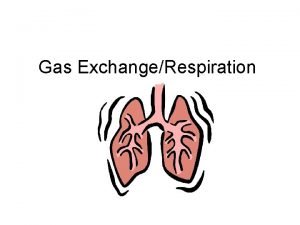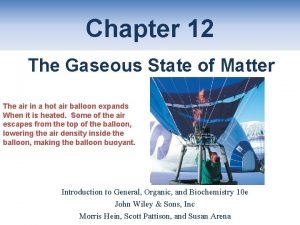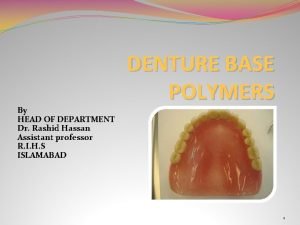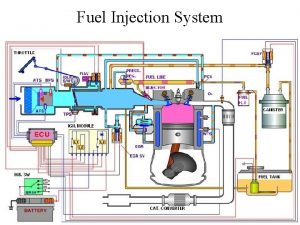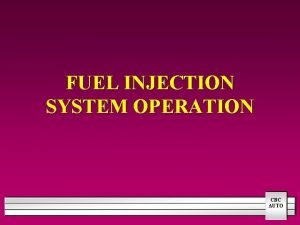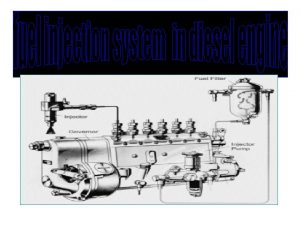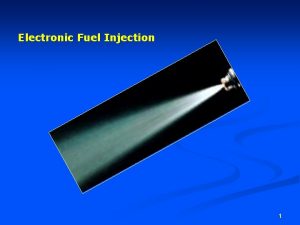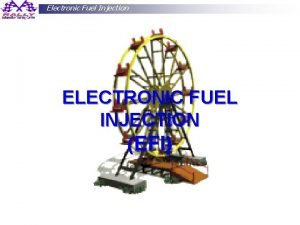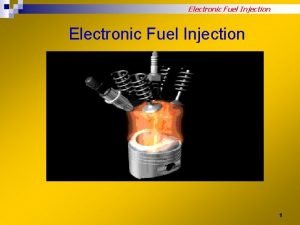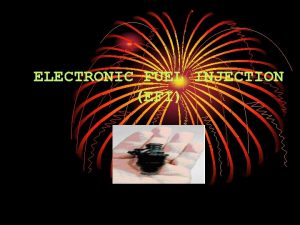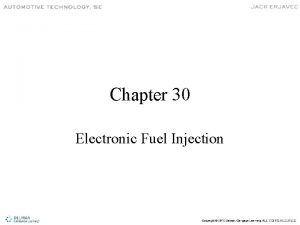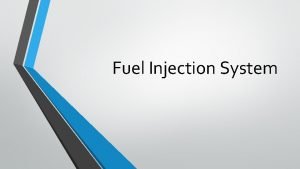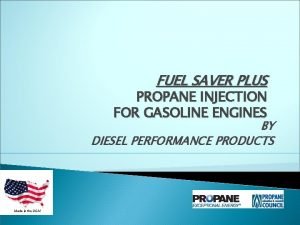Gaseous fuel Injection system for gasoline Direct Injection












- Slides: 12

Gaseous fuel Injection system for gasoline Direct Injection Engines AEB 3000

Direct injection Not convertible Convertible Direct Injection Engines • • • Bmw Mercedes Nissan Opel Renault Volvo • • Audi Ford Hyundai Kia Land Rover Seat Skoda Volkswagen Not Convertible Direct Injection Engines at the moment • • Alfa Romeo Citroen Lexus Mazda Opel Peugeot Renault Toyota

Direct injection FITTING INSTRUCTION • • • NECESSARY INFORMATION FOR REQUEST TO CONVERT A CAR Engine code – Petrol ecu code – Model year – Engine power (KW) Follow the wiring diagram provided form AEB for converting the car, the pin number, the colour of the wires and the sequence. When is possible is better check the signal on the petrol injector by oscilloscope for being sure that the connection is right. Before drill the intake manifold is better verify that inside of them are present mechanical batterfly or separated ducts before the petrol valves. We suggest you, if you see a new engine, to disassemble the intake manifold for verify where is better put the nozzle. WARNING wrong drilling can generate problem when the car works on petrol or malfunction during gas operation.

Direct injection concept The fuel supply system uses a high pressure pump to store fuel (boost of 50÷ 120 bar) in the fuel rail that feeds the injectors. The fuel rail is made sufficiently large that pressure fluctuations within it are minimised as each injector opens. The pressure of the fuel in the injector supply rail is controlled by an electronicallycontrolled bypass valve that is varied in flow by being pulse-width modulated by the Electronic Control Unit (ECU). A fuel pressure sensor is used to monitor fuel rail pressure. Injector: Compared with a conventional port fuel injection system, the fuel injectors must be capable of working with huge fuel pressures and also injecting large amounts of fuel in very short periods. The reason for the much reduced time in which the injection can be completed is due to the fact that all the injection must sometimes occur within just a portion of the induction stroke. The fuel requirements at idle can drop the opening time to just 0. 4 milliseconds.

Direct injection combustion modes Homogenous Mode: is used at high torque outputs and at high engine speeds. Injection starts on the intake stroke so there is sufficient time for the air/fuel mixture to be distributed throughout the combustion chamber. Stratified Charge Mode: the injector adds the fuel during the compression stroke, just before the spark plug fires. In the period between the injection finishing and the sparkplug firing, the airflow movement within the combustion chamber transports the air/fuel mixture into the vicinity of the sparkplug. This results in a portion of relatively rich air/fuel mixture surrounding the sparkplug electrode while the rest of the combustion chamber is relatively lean. The gas filling the rest of the chamber often comprises recirculated exhaust gases which results in a reduced combustion temperature and so decreased NOx emissions.

Gaseous direct injection application The main differences with the traditional multi-point fuel injection are: q Petrol injectors are located into the combustion chamber. q High and variable pressure into the petrol injection common rail. q Fuel Stratified Injection (FSI). q Variable Geometry of the intake manifolds.

Petrol injectors are located into the combustion chamber q Petrol injectors work with high pressure and high temperature Partial injection of petrol is necessary in gas mode in some engine conditions (high load, high rpm) to preserve the integrity of the petrol injectors. There is a petrol consumption in gas mode that can not be eliminated. q Petrol injectors are driven in current-mode (high voltage, high current with current feedback and fine diagnostic controls) The Hardware of gas ECU for direct injection is quite different from the standard one. Every petrol injector type needs dedicated configuration of gas ECU in order to emulate properly the petrol injectors (sophisticated cut injector electronic stage). q Peak and hold management of the injector is made with high voltage and switching signal on positive pole. Positive signals are common for two injectors (2 pairs: 1 -4, 2 -3) Is not possible to use the signal on the positive of the injector, the KOEO signal has to be taken elsewhere (i. e ignition coil), dedicated instructions are necessary.

High and variable pressure into the injection common rail q Fuel pressure is continuously controlled by a pressure regulator and monitored by the petrol ECU by reading a pressure sensor. q In gas mode petrol injectors are inhibited, there is no flow of petrol in the rail and petrol ECU reads unattended pressure values Gas ECU can emulate pressure sensor signal, in order to keep petrol pressure in the expected range and prevent sensor fault detection by petrol ECU (MIL ON). To obtain a correct emulation, the pressure sensor signal must be properly connected to gas ECU and the OBD communication with the petrol ECU is required.

Fuel Stratified Injection (FSI) q Stratified injection mode is used in some vehicle to reduce the emission adding fuel during the compression stroke. q Is not possible to intruduce the gas-air mixture in the compression phase and this implies the impossibility to run on gas in the fuel stratified injetion condition. Some localized conditions, where FSI strategy take place, can be individuated and in that conditions the gas system must run in “petrol mode”. There is a petrol consumption in gas mode that can not be eliminated. However, in some applications a specific emulation procedure can be used to avoid petrol addition running on gas by inhibition of the FSI strategy.

Variable gometry of the intake manifolds q Many direct injection engines have variable intake manifolds: geometry of the intake pipes can be modified while the engine is running by acting on special throttle located inside the manifolds. Air flow is optimized depending on engine condition, giving more power and torque, and improving fuel efficiency. q Turbocharger and compressors are very frequent on direct injection engines to improve engine performance Gas nozzle positioning on the manifolds is critical. Dedicated instructions are needed to make the holes on the manifolds in the right position, and to give the proper direction of the injected gas flow. In some cases special pipes and nozzles are required in order to optimize gas injection throught the manifolds. Special pipes are put into the intake ducts and connected to proper nozzles to the gas injectors. The length of the pipes between gas injectors and intake manifold, as the size of gas injector nozzles are fitted depending on specific engine features.

Gaseous direct injection application Conclusion: q A minimum petrol consumption is always present in gas mode, the amount of the petrol used depends by the engine features and therefore could be variable on different vehicles. q The petrol injectors emulation is the most delicated part of the application and must be developed directly by AEB technicians. q Dedicated istructions are necessary for every king of engine to connect properly wires and sensors. q Gas nozzle positioning on the manifolds must be done in right position and with the proper direction of the injected gas flow. v Install only vehicles validated by AEB (vehicles library) v Follow rigorously the schematics and instructions given by AEB

A. E. B. S. P. A. a socio unico Via dell’Industria 20 | 42025 Cavriago (RE) | Italia Ph. +39 0522 494401 | fax +39 0522 494410 | info@aeb. it | www. aeb. it
 Chapter 42 gasoline injection diagnosis and repair
Chapter 42 gasoline injection diagnosis and repair L m p f i system uses
L m p f i system uses What is multi port fuel injection
What is multi port fuel injection Synerject injection
Synerject injection Synerject llc
Synerject llc My very excited mother just served us nachos
My very excited mother just served us nachos Inorganic gaseous pollutants of air
Inorganic gaseous pollutants of air Xeromorphic plants
Xeromorphic plants Inorganic gases
Inorganic gases Carbaminohemoglobin
Carbaminohemoglobin Gaseous state chapter
Gaseous state chapter Gaseous porosity denture
Gaseous porosity denture Gaseous exchange in animals
Gaseous exchange in animals
